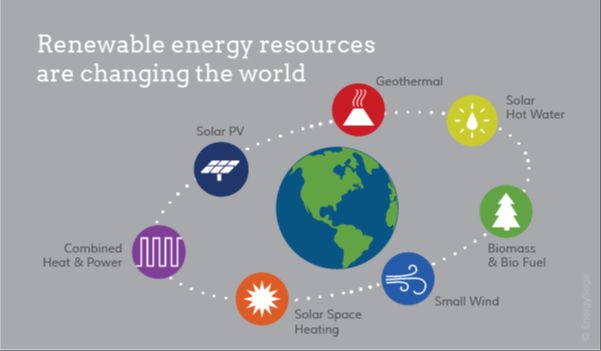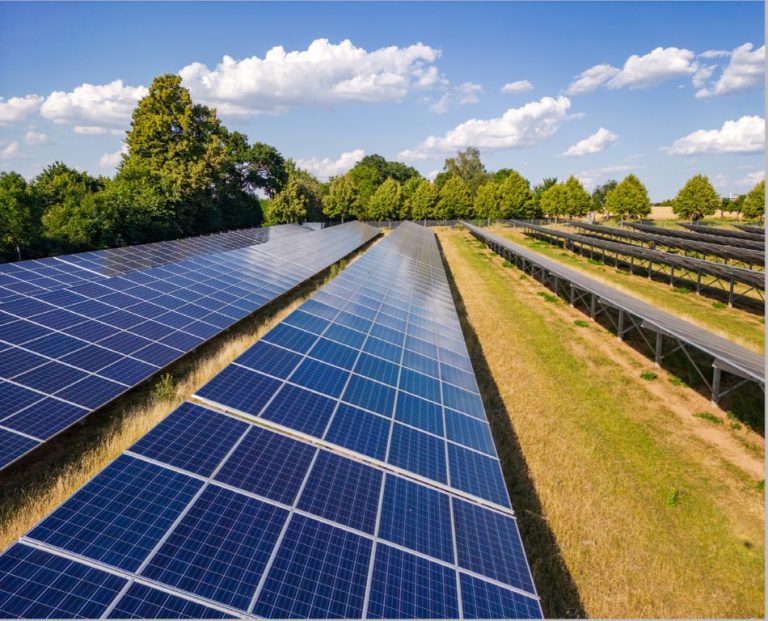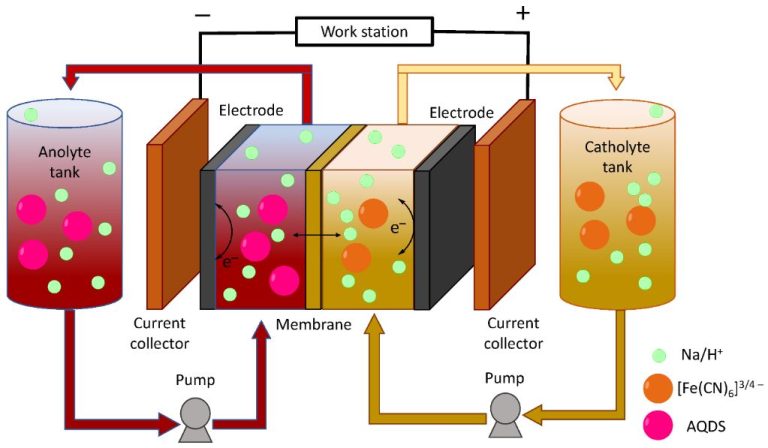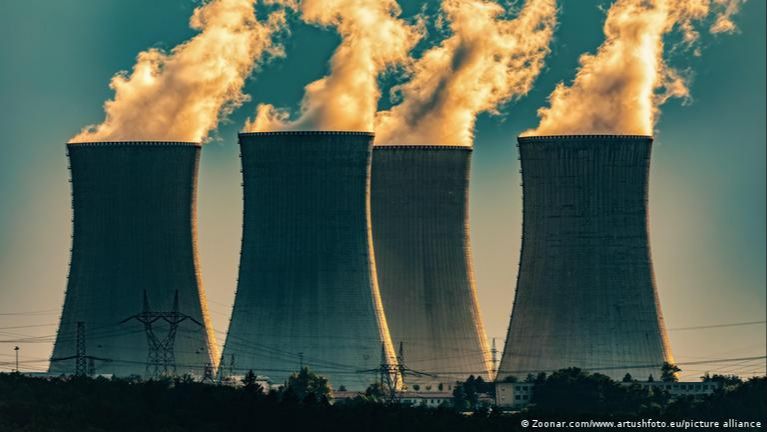Why Renewable Energy Cannot Replace Fossil Fuels By 2050?
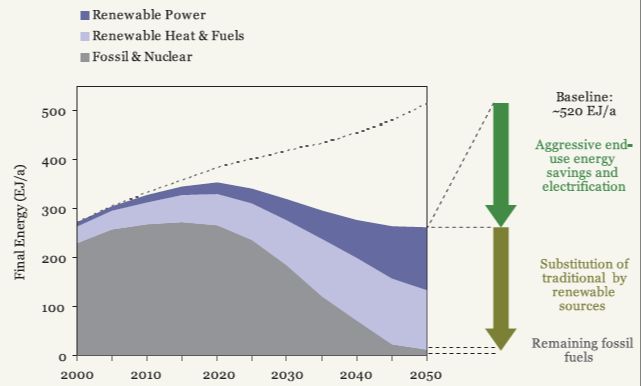
Despite significant growth in renewable energy over the past decade, the ability of renewable sources to fully replace fossil fuels by 2050 remains doubtful. This article will argue that technical limitations, economic barriers, and practical constraints prevent renewable energy from supplanting the dominant role of fossil fuels in the global energy mix within the next three decades. While renewable energy generation has increased rapidly in recent years and costs have declined substantially, multiple analyses suggest the pace of growth is still far too slow to completely phase out coal, oil, and natural gas by 2050. Significant breakthroughs in energy storage, transmission, materials, and other innovations, coupled with much higher carbon prices, would be needed to drive renewable adoption rates high enough to make up 80% or more of total energy supply within just a few decades. This article will examine the key technical and economic factors hindering renewable energy expansion, the practical challenges of integrating high shares of variable renewables, limits on suitable geographic locations, and realistic timelines for scaling nascent technologies. Even under optimistic scenarios, renewable energy is only expected to reach 50-60% of global energy generation by 2050.
Current Share of Renewables
According to the International Renewable Energy Agency (IRENA) report, as of 2013 the proportion of global Total Final Energy Consumption (TFEC) from renewable energy was approximately 19%, with the majority of this coming from traditional biomass such as wood and charcoal. The share contributed by “modern renewables” such as solar, wind, geothermal, etc. was just 7%. The remainder of global TFEC was supplied by fossil fuels at 81%, primarily from oil (31%), coal (29%), and natural gas (21%).
This demonstrates that currently, fossil fuels supply the vast majority of the world’s energy needs. While the share from modern renewables is growing over time, it still remains a relatively small fraction compared to fossil fuels. Significant growth in renewables would be required to displace the entrenched dominance of oil, coal and natural gas in the global energy mix.
Growth Rate Needed
Currently, renewables only account for around 10-15% of global energy demand. To reach 100% by 2050, renewable energy would need to grow at an extremely rapid rate.
According to the International Renewable Energy Agency (IRENA), renewable energy capacity would need to grow by as much as 6-8 times current levels by 2050. This translates to average annual growth rates of 9-14%, compared to the current growth rate of around 2-3%.
One analysis found that solar capacity alone would need to grow by 20% annually from 2020 to 2050 to reach the levels needed. Wind would need to grow by 10% annually. These growth rates are 3-4 times higher than what has been achieved historically.
Reaching 100% renewable energy globally would require the installation of up to 630 gigawatts (GW) of new renewable energy every year until 2050. For context, the world installed only around 260 GW total in 2019. This illustrates the massive ramp up required.
With current growth rates, analyses show renewables are on track to meet only around 20-40% of global energy needs by 2050. Accelerating growth 4-6 fold would be an unprecedented undertaking.
Intermittency Challenges
The intermittency of renewable energy sources like solar and wind poses significant challenges for relying on them to meet energy demand. Solar power is variable since there is no sunlight at night, and it is intermittent due to changes in cloud cover and weather [1]. Wind power can also be intermittent because wind speeds constantly fluctuate.
This intermittency makes it difficult to match renewable energy generation with energy demand, which is continuously changing throughout the day. When renewable sources are not generating enough power, fossil fuels are needed to make up the gap. Relying completely on renewables would require overbuilding capacity and having enough energy storage to smooth out intermittency, which currently remains prohibitively expensive at scale [2].
Storage Limitations
Current battery storage technology has limits that constrain the expansion of renewable energy. Lithium-ion batteries have improved dramatically but still have some key limitations (https://dragonflyenergy.com/renewable-energy-storage-bottleneck/). They can only handle a few hundred to few thousand charge cycles over a typical 10 year lifespan. Battery storage degrades over time and needs replacement. This adds significant lifetime costs compared to fossil fuel power plants. While research is ongoing, lithium-ion batteries remain expensive for large-scale grid storage. According to one estimate, the US would need over 2 billion Tesla Powerwall units to store just 1 day’s worth of total electricity demand, costing over $2 trillion (https://qmerit.com/blog/energy-storage-systems-understanding-the-duration-and-limitations-of-energy-storage-capacity/). Current technology cannot yet provide cost-effective long-duration storage to cope with multi-day low renewable generation events.
Transmission Capacity
One major challenge with scaling up renewable energy is building enough transmission capacity to connect generation sites with load centers. Solar and wind farms are often located far from cities and industrial areas with high electricity demand. Massive investments are needed in high-voltage, long-distance transmission lines to transport the power.
Permitting and constructing new transmission lines is complex, time-consuming and faces environmental opposition. Upgrades to existing grids are also required to handle intermittent flows from renewables. Most experts believe transmission infrastructure severely lags behind and poses a bottleneck for renewables growth. Without major expansion of grids, it will be difficult to scale renewables at the pace needed to reach 100% by 2050.
Land Use Constraints
Wind and solar power require significantly more land area than fossil fuel power plants to generate the same amount of electricity. According to analysis from the Brookings Institution, wind and solar generation require at least 10 times as much land per unit of power produced than coal- or natural gas-fired power plants, including land needed for raw material extraction and supporting infrastructure. This could pose a challenge for the large-scale deployment of renewables needed to fully replace fossil fuels by 2050.[1]
Estimates of total land use for a fully renewable system in the U.S. range from 0.17% to 1.63% of total land area, compared to 0.11% currently used for energy production. While renewable energy doesn’t necessarily need to use more total land than today’s mix, the geographic distribution and types of land needed pose constraints.[2] Deploying massive amounts of wind/solar will require utilizing lower quality lands, which increases total land needs and costs. There are also transmission and distribution challenges getting renewable energy from suitable high-yield lands to population centers.
Overall, while renewable energy can utilize some marginal and non-traditional lands, scaling it up to fully replace fossil fuels by 2050 would require a massive expansion of land use that could face environmental, social and cost barriers.
High Capital Costs
The high upfront capital costs of renewable energy generation present a major barrier to reaching 100% renewable energy by 2050. Though the costs of technologies like solar and wind have declined dramatically in recent years, they still require large initial investments (IEA, 2023).
According to the International Energy Agency (IEA), the global weighted average levelized cost of electricity (LCOE) for utility-scale solar PV in 2020 was $83/MWh, compared to just $44/MWh for advanced natural gas power. Onshore wind was more competitive at $56/MWh, but still higher than gas (IEA, 2022).
These cost differentials matter because fossil fuel plants require relatively little upfront capital. A large 1,000 MW natural gas plant can be built for under $1 billion, whereas an equivalent-sized solar or wind farm would cost several times more. With trillions required to replace existing fossil fuel capacity, financing such a transition by 2050 poses an enormous challenge.
Though renewables have gained competitiveness, market factors like high interest rates and investment risks can make financing difficult compared to proven fossil fuel technologies. Overcoming these financial barriers will be critical to scaling up renewables at the pace needed to fully decarbonize the global energy system.
Geographic Limitations
Renewable energy generation is often constrained by geographic factors that limit the locations where it can scale up. For example, hydropower requires access to flowing water, wind power needs consistent wind patterns, and solar power relies on abundant sunlight. Many high-demand regions lack these geographic resources in sufficient quantity to meet their energy needs. As the University of Colorado Law Review notes, there are often mismatches between renewable generation potential and electricity demand, due to geographic constraints.
These geographic limitations mean that certain regions are better suited for renewable generation than others. Large, sparsely populated regions with good solar and wind resources, like deserts and plains, have greater potential. Smaller, highly populated areas tend to have less renewable generation capacity within their own geographic borders. This creates transmission bottlenecks in connecting renewables from source regions to load centers.
While geographic constraints do not preclude scaling up renewables, they do limit how much can be deployed in certain areas. Overcoming these limitations requires building long-distance transmission links between resource-rich and resource-poor regions. The costs and land requirements add challenges when expanding renewable generation nationwide.
Conclusion
In summary, while renewable energy sources like wind and solar have seen rapid growth in recent years, there are still significant technical and economic limitations that will prevent them from fully replacing fossil fuels globally by 2050 (J. Str, 2022). The intermittent and variable nature of renewables requires large investments in energy storage and transmission infrastructure to balance supply and demand across regions and time periods (Templar, 2012). Even with major advancements, the storage and transmission needs cannot be feasibly met in the next few decades. Renewables also require vast amounts of land and materials, face geographic constraints, and currently have much higher capital costs per unit of energy compared to fossil fuels. While renewable energy will play a major role in decarbonization efforts, other low carbon energy sources like nuclear and natural gas with carbon capture will likely be needed through 2050 and beyond in order to provide affordable and reliable energy globally while significantly reducing emissions.

